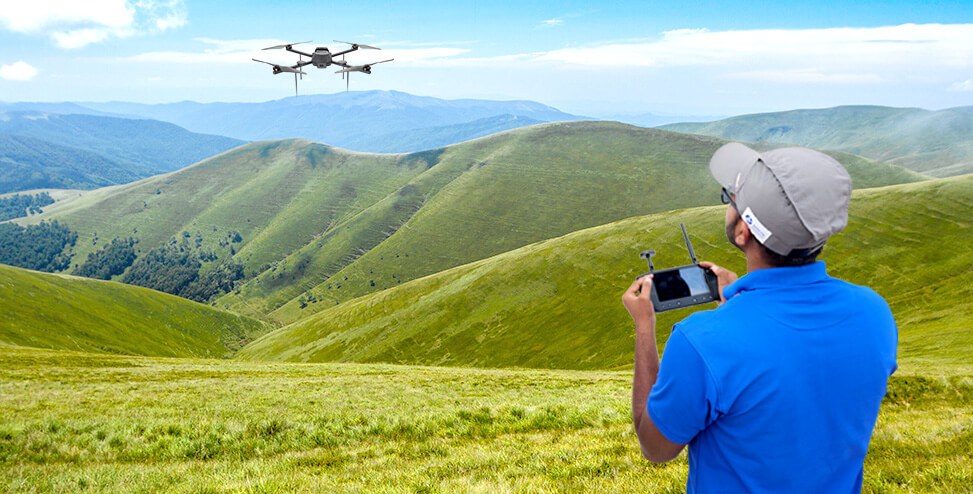Top Benefits of Using Drone GIS Software in Modern Industries

In the digital age, industries are rapidly adopting advanced tools to enhance accuracy, efficiency, and productivity. Among these tools, drones have emerged as one of the most transformative technologies. While drones initially gained popularity for aerial photography and recreational purposes, their role has expanded significantly across professional fields. One of the most powerful applications today is drone GIS software, which integrates geographic information systems with aerial data collection. This technology has redefined how businesses approach mapping, surveying, and spatial analysis.
In addition to industrial applications, drones have also found a crucial role in safety, with drone for security solutions becoming more common in both private and public sectors. Together, these advancements showcase how drone technology is driving innovation and efficiency.

What is Drone GIS Software?
Drone GIS software is a specialized platform that processes aerial data collected by drones and integrates it with geographic information systems. By combining high-resolution imagery, LiDAR data, and GPS information, the software generates maps, 3D models, and spatial datasets. These outputs are vital for industries like agriculture, construction, mining, and environmental management.
The advantage lies in automation and precision. Traditional surveying methods often require manual labor, extended time, and high costs. With drone mapping solutions, industries can achieve faster data collection with greater accuracy.
Top Benefits of Drone GIS Software in Modern Industries
1. Enhanced Data Accuracy
One of the primary benefits of drone GIS software is the accuracy it delivers. Equipped with advanced sensors, drones capture geospatial data with centimeter-level precision. The software then processes this data into accurate topographic maps, reducing human errors common in manual surveys. For projects like road construction or land-use planning, this level of detail ensures better outcomes.
2. Faster Data Collection
Time is a valuable resource across all industries. Traditional surveys could take days or even weeks, especially for large areas. With drone GIS software, drones can capture vast amounts of data in a fraction of the time. Surveyors can cover hundreds of acres within hours, speeding up project timelines significantly.
3. Cost-Effective Operations
Manual surveys and inspections involve high labor costs, specialized equipment, and longer project durations. Drones eliminate many of these expenses. By adopting drone GIS software, businesses reduce the need for large survey teams and equipment rentals while achieving the same—if not better—results at a lower cost.
4. 3D Modeling and Visualization
Modern industries often require more than just flat maps. Drone GIS software enables the creation of 3D models and digital twins, providing realistic representations of physical environments. These models are vital for construction projects, mining operations, and urban planning. Decision-makers can visualize terrain, evaluate potential challenges, and optimize strategies before breaking ground.
5. Improved Safety and Accessibility
In industries like mining, oil and gas, or disaster management, surveying certain areas can be hazardous for human workers. Drones reduce these risks by collecting data from difficult or dangerous locations. Coupled with drone GIS software, they provide comprehensive insights without putting personnel at risk. This advantage is also echoed in drone for security applications, where drones monitor sensitive areas without exposing security teams to danger.
6. Integration with Other Systems
Another advantage of drone GIS software is its compatibility with other geospatial platforms. It can integrate seamlessly with existing GIS databases, CAD systems, and cloud storage. This interoperability allows industries to combine drone data with satellite imagery, historical maps, and ground surveys for more holistic decision-making.
7. Real-Time Data Sharing and Collaboration
Cloud-based drone GIS software allows real-time data sharing. Project managers, engineers, and stakeholders can access updated maps instantly, no matter their location. This collaborative approach enhances communication, ensures transparency, and accelerates approvals in large-scale projects.
8. Environmental and Agricultural Applications
In agriculture, drones paired with GIS systems monitor crop health, irrigation efficiency, and soil quality. Farmers use these insights to optimize yield and reduce resource wastage. Similarly, environmental agencies rely on drone GIS software to track deforestation, monitor wildlife habitats, and assess disaster impacts. These applications highlight how drone technology contributes to sustainability.
9. Versatility Across Industries
The scope of drone GIS software extends across multiple industries. In construction, it supports land surveys and progress tracking. In mining, it measures stockpiles and monitors environmental impact. Governments use it for urban planning and infrastructure development. Meanwhile, companies using drone for security leverage drones to monitor restricted zones, enhance surveillance, and ensure public safety.
10. Scalability and Future Growth
As technology evolves, drone GIS software is becoming more scalable and adaptable. From small businesses to multinational corporations, organizations can adopt drone solutions tailored to their needs. With advancements in artificial intelligence, machine learning, and 5G connectivity, future applications will be even more powerful, enabling predictive analytics and autonomous operations.
Drone for Security: A Parallel Benefit
While drone GIS software dominates industries focused on mapping and spatial data, another area of significant impact is surveillance and protection. Using a drone for security has become an effective strategy for businesses, governments, and event organizers.
Drones equipped with cameras, thermal sensors, and live-streaming capabilities can monitor large areas in real-time. They provide rapid situational awareness, detect potential threats, and support law enforcement during emergencies. For industries managing critical infrastructure, such as airports, power plants, or oil refineries, drones offer a proactive layer of protection.
Integrating GIS data with security drones further enhances their functionality. For example, drones can be programmed to patrol specific coordinates, follow geofenced routes, and respond to anomalies detected in spatial datasets. This synergy between GIS and security creates a smarter, more responsive surveillance system.

Challenges in Implementation
Despite their benefits, drones and related software face challenges. Regulatory restrictions, data privacy concerns, and the need for skilled operators are common hurdles. Additionally, industries must invest in training and infrastructure to maximize the potential of drone GIS software and drone for security applications. However, as regulations mature and technology advances, these barriers are gradually being overcome.
Conclusion
The adoption of drone GIS software is transforming industries by making data collection faster, more accurate, and cost-effective. From construction and agriculture to mining and environmental conservation, the benefits are evident across diverse sectors. At the same time, deploying a drone for security is enhancing surveillance, safety, and risk management for businesses and governments alike.
For organizations seeking to leverage these innovations, partnering with an experienced technology provider is key. Asteria Aerospace stands out as a leader in this field, offering cutting-edge drone solutions tailored to industry needs. With their expertise in both GIS-driven mapping and security applications, they empower businesses to unlock the full potential of drones in today’s data-driven world.



